Icelanders’ Manitoba saga marks Year 150 It’s been a century-and-a-half since a couple hundred highly literate but destitute migrants arrived in what is now Gimli to build new lives focused on farming and fishing
Read this article for free:
or
Already have an account? Log in here »
To continue reading, please subscribe:
Monthly Digital Subscription
$0 for the first 4 weeks*
- Enjoy unlimited reading on winnipegfreepress.com
- Read the E-Edition, our digital replica newspaper
- Access News Break, our award-winning app
- Play interactive puzzles
*No charge for 4 weeks then price increases to the regular rate of $19.00 plus GST every four weeks. Offer available to new and qualified returning subscribers only. Cancel any time.
Monthly Digital Subscription
$4.75/week*
- Enjoy unlimited reading on winnipegfreepress.com
- Read the E-Edition, our digital replica newspaper
- Access News Break, our award-winning app
- Play interactive puzzles
*Billed as $19 plus GST every four weeks. Cancel any time.
To continue reading, please subscribe:
Add Free Press access to your Brandon Sun subscription for only an additional
$1 for the first 4 weeks*
*Your next subscription payment will increase by $1.00 and you will be charged $16.99 plus GST for four weeks. After four weeks, your payment will increase to $23.99 plus GST every four weeks.
Read unlimited articles for free today:
or
Already have an account? Log in here »
According to one theory, it wasn’t radical ideas about the rights of man and self-government that sparked the French Revolution — but Iceland’s 1783-84 Laki volcanic eruption.
Spreading poisonous clouds throughout the Northern Hemisphere, the eruption’s fallout ravaged crops and exacerbated famine in feudal France, ripening conditions for a peasant insurrection.
Nearly 100 years later, another eruption in Iceland once again set history’s wheels in motion, triggering the largest known exodus of Icelanders in its long recorded history.
Famously, most Icelandic immigrants — generally pastoral farmers just like their great-grandparents and many generations before them — came to Manitoba.
While “Sigurdson” and “Arnason” fill rather less space in Manitoba’s White Pages than “Friesen” and “Smith,” our province still hosts the world’s largest diasporic Icelandic population: about 31,000 compared to the fewer than 400,000 people elsewhere overseas who call Iceland home.
MIKE DEAL / FREE PRESS The White Rock Monument on Willow Island in Gimli marks the spot where the first Icelandic settlers are thought to have landed on the shores of Lake Winnipeg 150 years ago.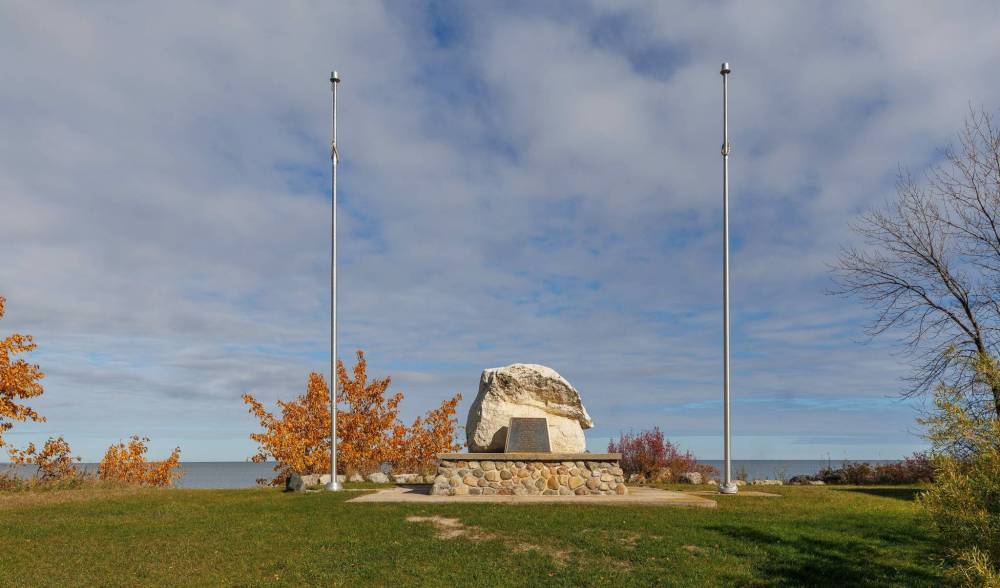
Like Iceland proper, habitants and descendants of New Iceland — which stretches from roughly Gimli to Riverton alongside Lake Winnipeg — outpunch their weight culturally.
They’ve become some of Manitoba’s most prominent sons and dóttirs: musician John K. Samson, filmmaker Guy Maddin, writer Kristjana Gunnars — not to mention Second World War spy William Stephenson, immortalized in Manitoba lore as author Ian Fleming’s inspiration for James Bond.
Canadian multiculturalism encourages mild ethnic pride amongst settler and immigrant populations. It celebrates narratives of boot-strap hardship and integration — with more wiggle room for cultural distinctiveness and festivities than the “American melting pot.”
And many Manitoba Icelanders, a highly self-aware community for how few still speak their dizzyingly conjugating mother tongue but for a few phrases, soon say ‘skál’ to a milestone.
Next Tuesday at noon, groups will “Walk to the Rock” from Gimli’s Waterfront Centre to Willow Island where 150 years ago a couple hundred Íslendingar (Icelanders) landed, in what would become Gimli, to make new lives as farmers and fishermen.
A highly literate but poor population — held down for centuries by masters in Norway and Denmark and industrializing late — the cohort of Icelanders here soon grew into the thousands.
“They didn’t have the possibility for establishing farms (in Iceland) due to the lack of available land suitable for the type of agriculture that they practised there, which is mostly pastoral,” says Ryan Eyford, associate professor in the University of Winnipeg’s department of history.
While mixed farming was, and remains, a key part of New Iceland’s economy, ultimately it was fishing that become the area’s economic lifeblood.
“It took time to learn the techniques people here used, particularly the Indigenous population, around Lake Winnipeg — to learn from them where to go to find fish and how to catch them in winter,” says Eyford.
“And when the export-oriented fish market was established towards the end of the 19th century, they were supplying markets in Chicago and New York with lake fish.”
FREE PRESS FILES Fishermen of Icelandic heritage ply their trade on Lake Winnipeg in winter 1924.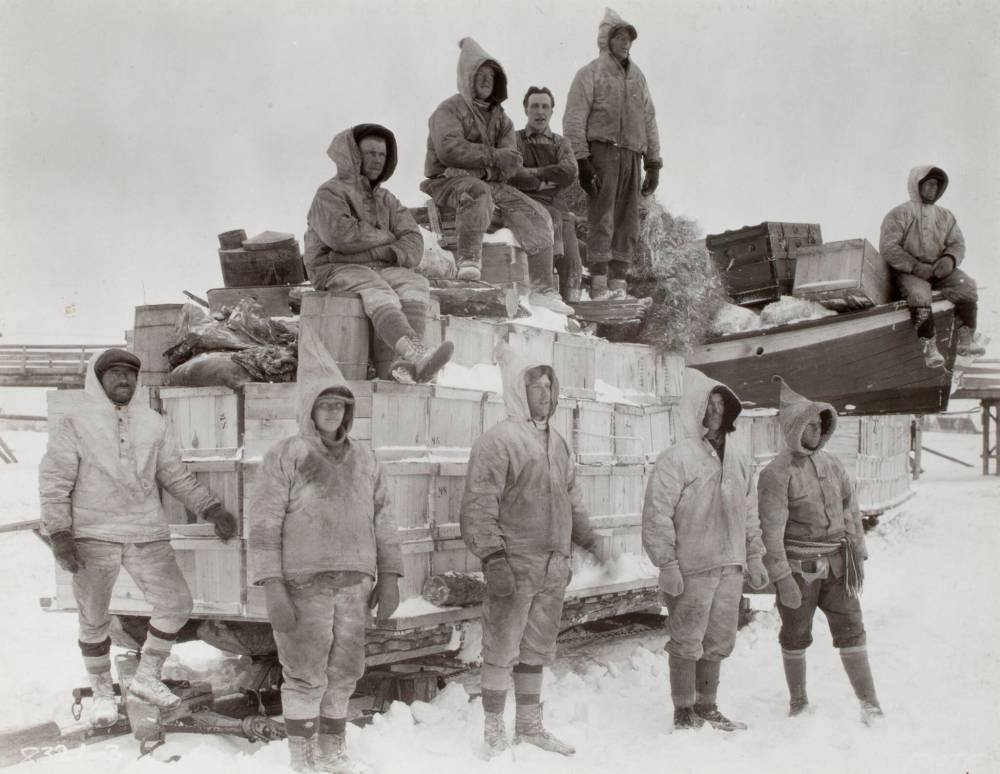
Before they established themselves in this way economically, the New Icelanders groped toward something like a social contract for their new community.
The first waves arrived in practical, oddly ornate Lutheran attire, sometimes with a few farm animals and tools, and suitcases often filled with books, including much devotional poetry. Unlike many of the Mennonites who settled in southern Manitoba, they weren’t fleeing religious persecution.
Like South Winnipeg’s more elite Anglican WASPs, most practised the relatively mellow Protestantism of their state church — in this case, a Lutheranism guided by the Danish crown — although a more rebellious faction soon left Gimli for Dakota territory due to a rift caused by religious and economic differences.
The Icelanders also arrived with some bold, more worldly ideas.
They included not just the unrealistic, get-rich-quick hopes stoked by our government and its immigration agents — which were soon tested by bitter winters and smallpox — but also peculiar notions of self-government.
Ideas that likely owed as much to Iceland’s thousand-year-old tradition of grassroots democracy — which saw Vikings argue and make law in the open-air Althing, at the fault line between the North American and Eurasian tectonic plates — as much as radical modern ideas from Europe.
Canadian multiculturalism encourages mild ethnic pride amongst settler and immigrant populations. It celebrates narratives of boot-strap hardship and integration – with more wiggle room for cultural distinctiveness and festivities than the ‘American melting pot’
In a backward echo of Iceland’s 2009-10 “Pots and Pans Revolution” — when 1,200 citizens were chosen at random to work with the new government to draft a fresh constitution — New Icelanders audaciously ratified their own constitution, which now resides at the University of Manitoba, in 1878.
The federal government put up with the plucky peasants’ constitution, handwritten in Icelandic and filled with strike-throughs, until the Manitoba government replaced it in 1887.
For Peter John R. Buchan, head of the University of Manitoba’s department of Icelandic language and literature, funny commonalities between Iceland and New Iceland run through to the present.
“There definitely are some parallels to be drawn,” he says. “I think partly it goes back to the Icelandic tradition of debate and parliamentary approach.”
Both Iceland and New Iceland are politically diverse, though rarely extreme in ideology.
While Manitoba’s rural south is often seen as a populist conservative stronghold, the Interlake-Gimli region is more fragmented politically. Gimli has been considered a swing riding. Its Icelanders broadly lean to the moderate right, while the Métis and Indigenous in smaller communities neighbouring Gimli lean to the left.
And while most Nordic countries saw their left-leaning Social Democratic parties dominate politics in the postwar period, it was Iceland’s centre-right Independence Party that has won most elections since its 1944 independence from Denmark, often resulting in coalition government. That is, until its Pots and Pans Revolution.
That revolt wasn’t just against 2008 financial crisis-related austerity, but also the perceived corruption of its business and political elite, centred especially on the Independence Party.
CYRIL JESSOP / COLLECTION OF THE NEW ICELAND HERITAGE MUSEUM Sigtryggur Jónasson (left) was the leader of the immigrant delegation that chose the New Iceland colony site in August 1875, in what would become Gimli.
There’s been heated debate since about EU accession, the 2016 “Panama Papers” scandal which further underscored Iceland’s backroom culture — as well as standard culture wars over gender and immigration in a country known for its gender equality but not for a high rate of immigration.
Nonetheless, Iceland — where for centuries Icelanders were steeped in pre-industrial poverty and banded together against outsider domination — remains arguably the most egalitarian Nordic nation.
And compared to the rest of the Nordic countries — where populist parties hold significant parliamentary sway — Iceland, for however much its re-ascendant left-wing parties since 2008 may freak out conservatives, can seem like an island of stability within an increasingly polarized region.
Buchan suggests loose political similarities between Gimli and Iceland are based partially on their relative insularity and size: when political friends and opponents alike are all close neighbours and have just enough in common with one another, they may be more compelled to get on.
“Because everyone knows each other, you’re not able to get away with a façade,” he says. “If you lived in Iceland, you might bump into the president or prime minister at the grocery store.”
You might just bump into Iceland’s top political brass in Gimli’s stores too — President Halla Tómasdóttir visited last August, while former prime minister Katrín Jakobsdóttir visited in 2018 — along with all the Canadian politicians who vacation in Gimli.
The parallels, perhaps as accidental as they are based on common influences, shouldn’t be exaggerated either.
Manitoba’s Icelanders, who make up less than three per cent of the population, integrated fairly quickly in many respects.
It must have felt like poetic justice for Gimlians to see the Winnipeg Falcons, made up mostly of Icelanders, clean up at the 1920 Olympics in Belgium after facing discrimination from the big city’s WASPs.
But they were still representing Canada in the country’s favourite pastime just a couple years after scores of Canadian Icelanders had fought overseas in the First World War.
And they would have done so with Canadianized surnames on their jerseys — having recently dropped Iceland’s patronymic system, where surnames change anew from generation to generation and are derived from their parents’ first name with the suffix -son or -dóttir.
“They weren’t allowed to play with the rest of the leagues in Manitoba, because Icelanders weren’t welcome, so they just formed their own team,” says Buchan. “It was part of the way that they could make themselves Canadians.”
Perhaps because of how seamlessly they’ve assimilated, Manitoba-Icelandic identity today often feels nostalgic and commemorative, a reminder of how much has changed.
ARCHIVES OF MANITOBA Visitors from Iceland in traditional dress, Icelandic Festival parade, August 4, 1975. More than 1,400 people from Iceland came to Gimli for the New Iceland centennial celebrations in 1975.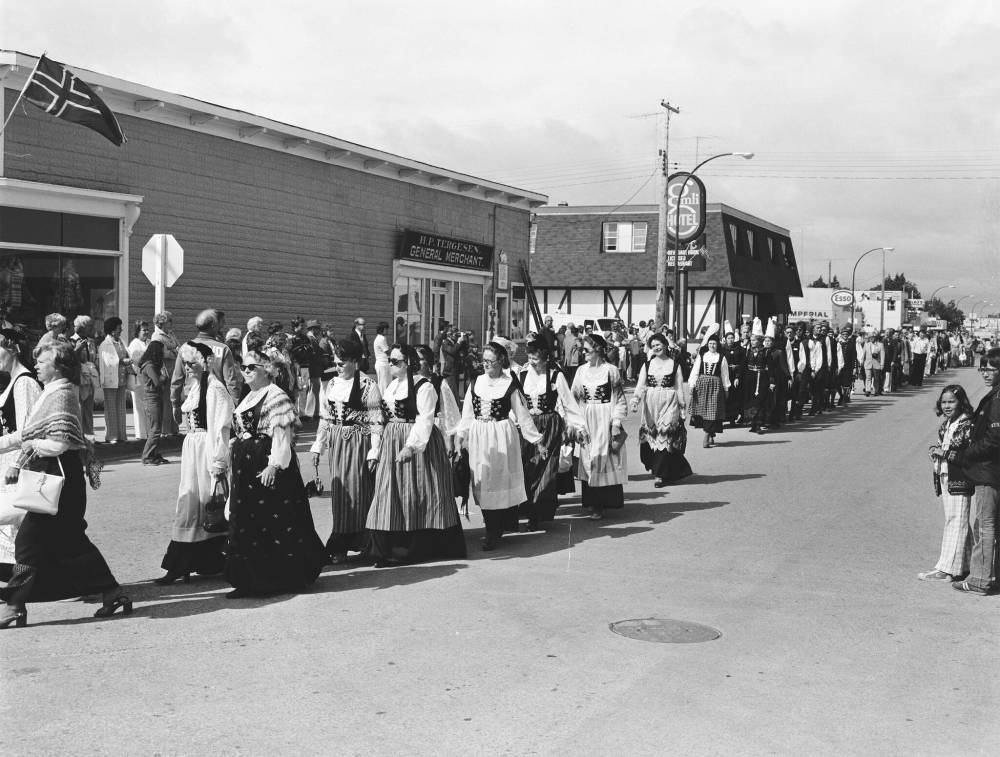
During the Gimli’s annual Icelandic festival, established in 1890, known as Islendingadagurinn (a most-satisfying word to pronounce correctly), visitors today can sample traditional Icelandic desserts like vínarterta prune cake or kleinur doughnuts courtesy of Amma’s Kitchen.
But walk down First Avenue and the first restaurants you’ll cross have names like Europa, Thai Thai Food Restaurant and Gimli Boy Restaurant. If you want lunch or dinner, it’s a lot easier most of the year to find hot dogs, pickerel and gyros than Plokkfiskur or Harðfiskur.
Gimli is now about a quarter Icelandic, in terms of ethnicity. Though on weekends, especially during spring and summer, many Arnasons and Sigurdsons flow back into mainland Gimli or the more secluded Willow Island to reconnect with family over bonfires and games of Kubb on the soft sand.
Meanwhile, Iceland remains among the most isolated communities in the world — and historically among the most homogeneous too, despite fast rising immigration.
Its historical lack of diversity, as conservatives relish pointing out, may be a condition of the “high trust” culture that’s undergirded its welfare state.
The theory goes that people are more likely to stomach high taxes to help support their neighbours — if they shop for the same foods, are fluent in the same language, practise spirituality in the same way, watch the same TV shows.
Iceland also ranks near the top of many “quality-of-life” metrics, often above Canada, and has long ceased to hemorrhage its poor and tempest-tost to our shores.
Notwithstanding, a cultural pipeline between Manitoba and Iceland still obviously flows.
It’s fostered not just by goodwill stopovers by Iceland’s presidents and prime ministers, but also by a slew of regional organizations that enjoy patronage from both the Icelandic and Canadian government — as well as by prominent local and Canadian patrons like Arni Thorsteinson and Donald K. Johnson.
Also contributing are entities like Islendingadagurinn, the Gimli Film Festival, the Lögberg-Heimskringla newspaper (serving North America’s Icelandic community) and the sporadically active Núna (now) festival, an exchange between Icelandic and New Icelandic artists.
While immigrant communities often stop speaking their mother tongue by the third generation, Buchan says many Manitoba Icelanders have retained relative fluency into their fourth generation here. They may have embraced being Canadian, but in overt ways they remained a remote island of Íslendingars.
Julianna Roberts says her generation are among the first New Icelanders in her family to marry non-Icelanders. As executive director of the New Iceland Heritage Museum right beside Islendingadagurinn’s offices in Gimli, she remains a passionate Icelandophile.
“I think pieces of your identity are so important, and as you get older, they become more important,” she says. “In New Iceland, the Icelanders work really hard to remember, promote, preserve their heritage and their culture.”
MIKE DEAL / FREE PRESS A devoted Icelandophile, Julianna Roberts is executive director of the New Iceland Heritage Museum in Gimli.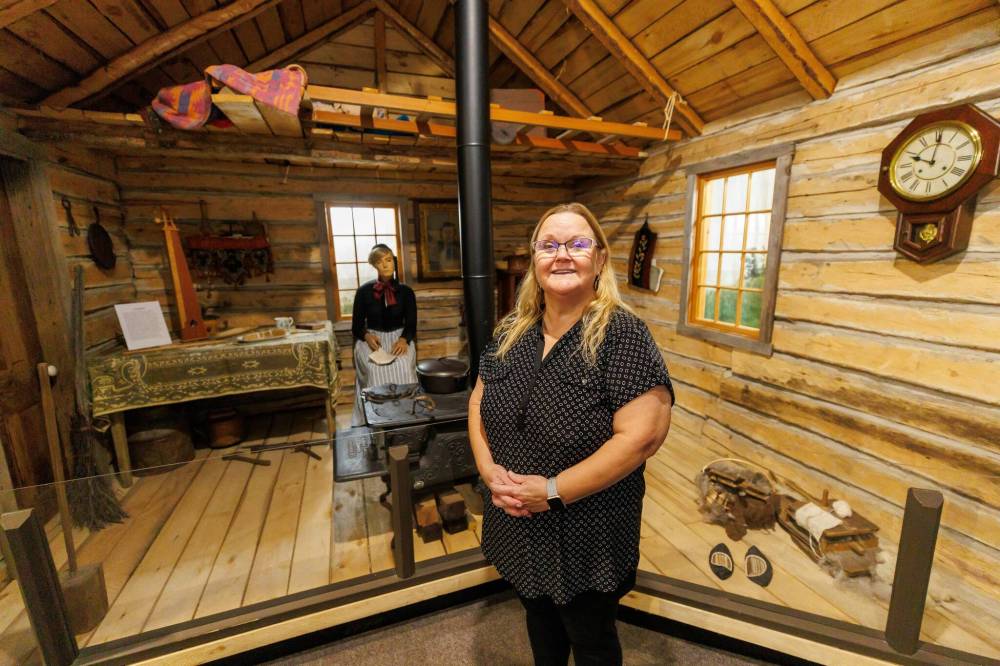
This sort of soft identity politics, particularly common among descendants of non-Anglo European settlers, can feel strong among New Icelanders.
But a certain troubled conscience also seems to have crept into their historical self-understanding.
“Part of the mythology that’s grown up around the settlement in North America of Icelanders was just part of the settler mythology — that the place was empty, or at least uncivilized, and we came in and built something,” says Buchan.
The Canadian government’s homesteading policies relied directly on treaties, like Treaty 1 signed into existence in 1871. These policies gave European newcomers, like Icelanders, privileged access to areas to settle and farm — while displaced Indigenous communities often failed to see the annual payments, land reserves and other benefits promised to them by treaty.
“The Icelanders were generally favoured immigrants. You know, Canada tried to recruit them and generally held a positive view of them,” adds Eyford. “There was in the very early days some prejudice directed against Icelanders, but that was relatively short-lived.”
One of Roberts’ favourite sections of the museum deals with the life and legacy of John Ramsay, a Salteaux man of St. Peter’s band (which became Peguis First Nation).
She lingers while famous country musician William Prince, himself from Peguis, croons in his warm baritone a moving ode to Ramsay in a video that runs along with the exhibit.
‘The Icelanders were generally favoured immigrants. You know, Canada tried to recruit them and generally held a positive view of them. There was in the very early days, some prejudice directed against Icelanders, but that was relatively short-lived’
Ramsay is credited with saving up to 75 settlers from starvation and exposure during their harsh early winters. As the exhibit notes, local Icelandic leader Trausti Vigfússon later restored the deteriorating grave of Ramsay’s wife Betsey — killed, along with Ramsay’s four children, by smallpox — after Ramsay appeared to him in a dream as an apparition asking for help.
But, as the exhibit also reflects, there’s a wrinkle in the harmonious image all this may at first evoke. After Icelandic settlers moved into Saulteaux ancestral territory, later encompassed by Treaty 5, Ramsay himself petitioned for recognition of their land rights in the area.
Readers may not be surprised to learn that the government’s unelected legislators, the Council of Keewatin, decided the matter in favour of the Icelandic settlers.
“It’s a very fascinating story, but it shows that there’s this really a fraught sort of back and forth,” says Buchan. Ramsay’s story was one of the topics of last Thursday’s Sagnaskemmtun: Connecting Indigenous and Icelandic voices colloquium at the U of M, hosted by his department alongside researchers from the department of Indigenous studies and from Iceland.
“On the one hand, there was a lot of support and assistance and friendship,” adds Buchan. “But the power structure really meant that the Icelanders took all the territory.”
Other, less apologetic visions of Nordic heritage spread in Scandinavia today. Visions that exceed gentle folkloric celebrations and justified pride in their social-democratic traditions.
When xenophobic populist groups like the Danish People’s Party or the Sweden Democrats — whose well-documented white-nationalist origins evidently do not sober the nearly 18 per cent of Swedish voters who recently said they’d cast a ballot for SD — talk of “Danishness” or “Swedishness” they evidently mean something more than the bloodless category of citizenship.
Their platforms’ ethno-nationalist notes are often more than undertones.
Iceland is not free from such dark forms of identity politics, but “Icelandicness” is not nearly so common a talking point among its politicians.
This comparative cultural tolerance may be surprising — after all, for a tiny society with memories of centuries of foreign domination, they’re fiercely protective of their culture.
MIKE DEAL / FREE PRESS A memorial stone honours Einar Gudmundson in Gimli Cemetery.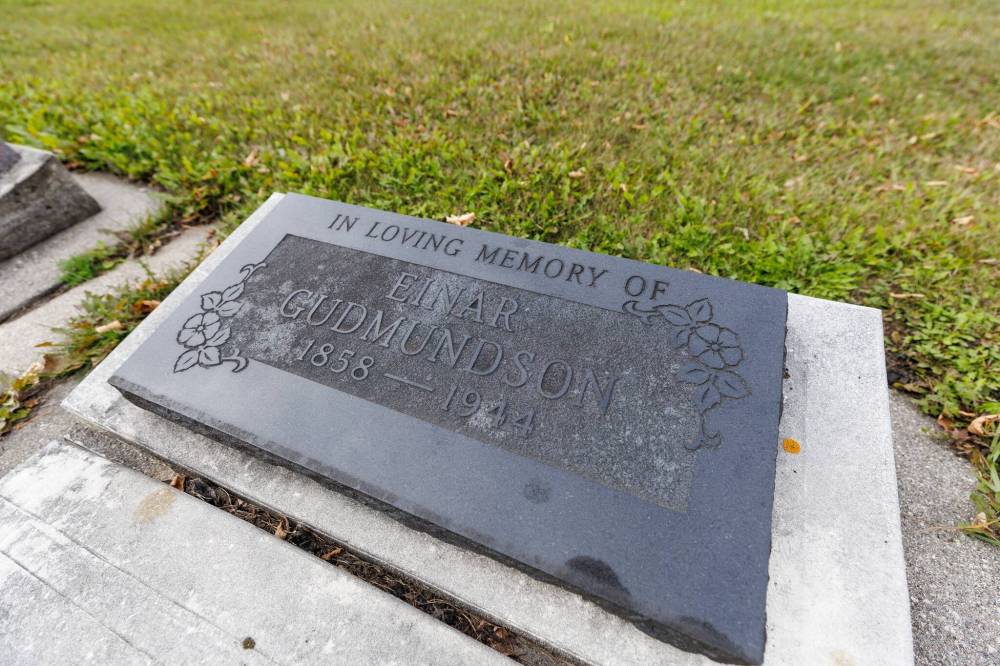
This has been buttressed not just by generous government funding of arts and culture (how else could a society smaller than Winnipeg boast hundreds of orchestras?), but also, historically, by fairly strict immigration controls.
Still, while they’re especially focused on turning rising numbers of newcomers into Icelandic speakers — each one becoming more than a drop in such a small linguistic pond — their schools abound in the sort of feel-good odes to Fjölmenning (multiculturalism) we might associate with Canada.
In the Westfjords, where many Poles and Lithuanians make new lives amid Iceland’s fishing and construction industries, public schools even offer free Polish and Lithuanian lessons so second generations don’t lose their language. The Icelanders appear to have learned practically what Canadian philosopher Charles Taylor posits in his classic text Multiculturalism: Examining The Politics of Recognition: Language is the vessel and safeguard of culture.
But with fewer than half a million people speaking their language, it’s not shocking that Icelanders’ official approach to diversity feels rather more reserved than Canada’s.
Here, bilingualism and multiculturalism have been enshrined in law for half a century — pillars of former prime minister Pierre Elliot Trudeau’s federalism.
We learn something of this moment in the last section of the New Icelandic Heritage Museum on New Iceland, which reminds us how Canadian multiculturalism helped buoy and fund Icelandic cultural organizations and events mentioned here.
“Some of the key leaders in the (Manitoba) Icelandic community at that time really welcomed it… they were among the leaders from the ethnic communities who were saying, ‘We’re not bicultural, we’re multicultural,’” says Eyford, who helped curate this part of the museum.
“(Former Chancellor of the University of Winnipeg) Paul Thorlakson… thought this was exactly the right approach for Canada, because Canada had benefited from the contributions of all these different people.”
Much multiculturalist discourse has now moved beyond the Laurentian liberalism of Trudeau, which triumphed cultural differences so long as they could be brought to heel by eastern-Canadian power.
Today’s discourse celebrates immigration and difference, while also pleading we reckon with the colonialist legacy that’s empowered newcomers, like the New Icelanders, to make lives here.
Unsurprisingly, multiculturalism is dismissed as “un-Canadian” by some amid a resurgence of right-wing populism in Canada, which is strong in southern Manitoba’s Portage-Lisgar district.
There, People’s Party leader Maxime Bernier — who has called for the Multiculturalism Act’s repeal — finished second in the 2023 federal byelection.
And yet, in tangled ways, its spirit of pluralism also hearkens back to Canada’s Confederation and its “founding vision.” It’s a troublingly Eurocentric vision, but one nevertheless recognizing Canada as a collection of distinct peoples and regions, with a system of governance that was supposed to reflect this. Multiculturalism has become as Canadian as apologizing and settlerism, even if these days it tends to do a lot of the first about the second.
“We have to keep renegotiating (pluralism) all the time, renegotiating our relationship with one another, renegotiating what it means to be Canadian,” says Buchan.
“I think multiculturalism, and I hope the reconciliation process, help Icelanders recognize that their culture developed in its own way. Fris-nok, the pickerel, the goldeye and all the rest of it — that’s all valid parts of the culture. (But) they’ve got to stop comparing it to Iceland and finding themselves coming up short… It’s not just about where they came from, but what they’ve developed.”
conrad.sweatman@freepress.mb.ca

Conrad Sweatman is an arts reporter and feature writer. Before joining the Free Press full-time in 2024, he worked in the U.K. and Canadian cultural sectors, freelanced for outlets including The Walrus, VICE and Prairie Fire. Read more about Conrad.
Our newsroom depends on a growing audience of readers to power our journalism. If you are not a paid reader, please consider becoming a subscriber.
Our newsroom depends on its audience of readers to power our journalism. Thank you for your support.
History
Updated on Sunday, October 19, 2025 4:35 PM CDT: Corrects typo

